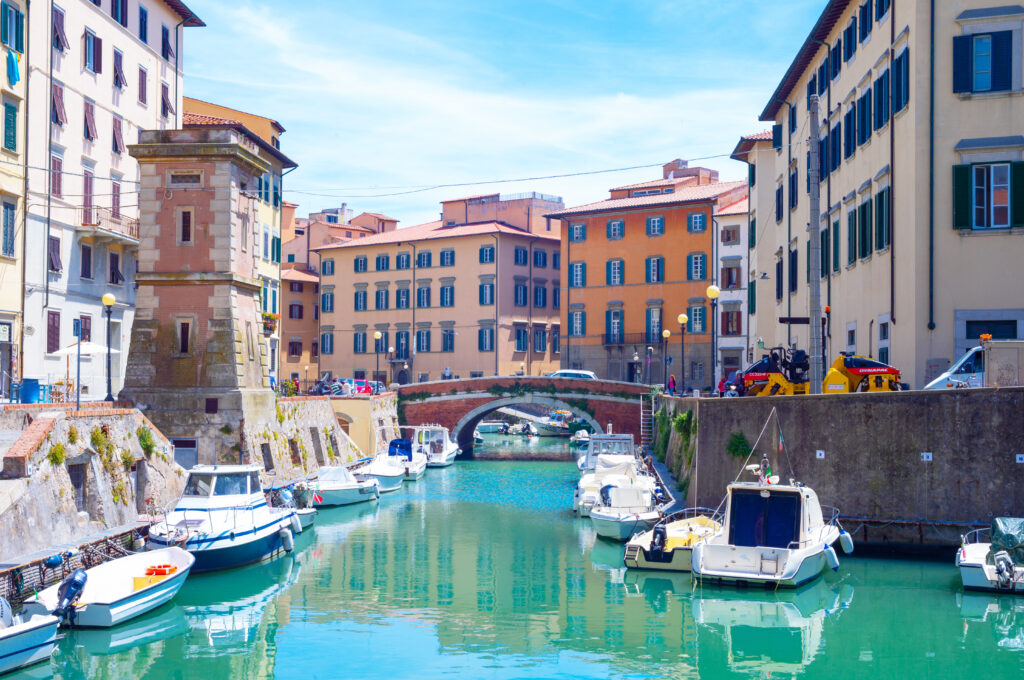In the heart of Livorno lies one of its most enchanting and distinctive neighborhoods: Quartiere Venezia Nuova (often simply called Quartiere Venezia). Defined by its canals (fossi), historic architecture, and mercantile legacy, this quarter offers visitors a window into the city’s past and an authentic slice of Tuscan life. Below are real insights, attractions, and curiosities to help you appreciate why this is one of Livorno’s must-see districts.

Historical Roots & Urban Design
- Seventeenth-Century Mercantile Ambition: Venezia Nuova was developed in the 1600s by the Medici dukes to support the booming trade and population in Livorno. The area was created to meet the needs of the new class of merchants who were drawn to the city, thanks in part to its status as a free port.
- Built on Water & Access to Sea: Much of the district was constructed on land partly submerged or marshy; canals were dug to transport goods directly from the port, and many buildings flank these waterways.
- Architectural Preservation: Venezia Nuova is “one of the few examples in Europe” of a merchant quarter from the 17th century that still retains many of its original urban and architectural features. The layout of canals, warehouses (cantine), old bridges, palazzi, and merchant houses helps preserve that period flavor.
Notable Sights & Buildings
- Via Borra: This is the grand principal street of the Venezia quarter. It was home to Livorno’s wealthiest merchant families and foreign consulates in the 19th century. Walking here gives you a feel for the historical prestige of the district.
- Palazzo Finocchietti: Built in the late 1600s for the Finocchietti family (originally from Annecy), this palace is a fine example of a merchant-house design: storerooms on lower levels, residential areas above, internal courts, and classic façade details. It was damaged during WWII but later restored.
- Palazzo dei Domenicani / Church of Santa Caterina: One of the most striking landmarks, the Church of Santa Caterina dates to 1720. Its dome (nearly 50 meters high) and its ornamented interiors are noteworthy. The adjoining Domenican complex (formerly a convent) has had many uses over time, including a prison; recently, it was restored to house part of the State Archive of Livorno.
- Palazzo del Refugio: Originally founded in the mid-1700s to help the poorer segments of society, the Refugio is part of the social history of the quarter. At different points it served as a school and shelter.
Local Culture, Lifestyle & Events
- Effetto Venezia Festival: Each summer, Venezia Nuova hosts Effetto Venezia, a multi-day event with concerts, performances, light displays, and art. The canals, squares, and restaurants come alive. It’s one of the district’s biggest cultural highlights.
- Canal Walks & Water Tours: The fossi (canals) are a defining feature. Visitors can stroll along the water’s edge, cross historic bridges (such as Ponte di Marmo), or take small boat tours to see the quarter from its waterways.
- Living Like a Local: Venezia Nuova retains a more residential and authentic feel than more tourist-heavy districts. Many eateries here are frequented by locals, not just visitors. Opening times can reflect that—restaurants may close during lunch or have different rhythms than you’d find in major tourist centers.
Curiosities & Hidden Gems
- The term “Venezia Nuova” literally means “New Venice,” owing to comparisons with Venice because of the network of canals and architecture. But its character is distinctly Livornese.
- Many of the buildings along the canals had dual purposes: warehouses for goods at canal level or beneath, with merchant residences above. These vertical and functional mixtures are a hallmark of the quarter.
- Some parts of the quarter were severely damaged during World War II, particularly along the canals and some religious buildings. Post-war reconstruction has restored many façades and structures, though scars of history remain in certain damaged or rebuilt segments.
What to Do When You Visit
- Take a guided or self-guided walking tour starting from Ponte San Giovanni Nepomuceno, proceeding through Via Borra, visiting Piazza dei Domenicani, Church of Santa Caterina, and Palazzo dei Domenicani.
- Schedule a boat tour of the canals to get the unique perspective of buildings rising from the water.
- Time your visit to include Effetto Venezia if you’re there in summer—music, lights, and vibrancy amplify the charm.
- Explore smaller streets and discover local eateries and cafés where you can try seafood, Tuscan dishes, or simple meals with local ingredients—this quarter has some of the most genuine dining in Livorno.
Livorno’s Quartiere Venezia Nuova is more than an attraction—it’s a living, watery, architectural storybook. Its combination of history, water, trade legacy, and community make it one of Tuscany’s most interesting urban quarters. If your clients are looking for something off the usual tourist map yet rich in atmosphere, this is definitely a place worth lingering in.

